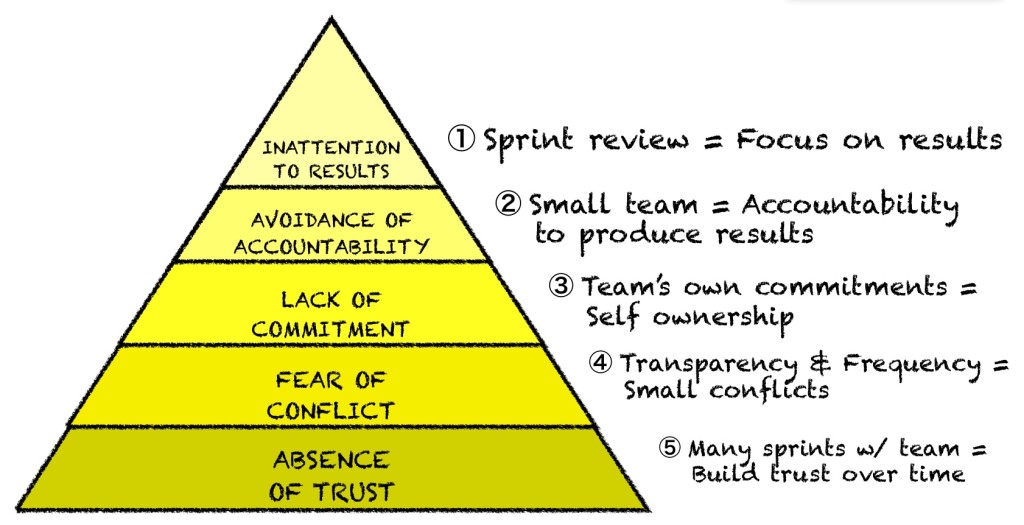
Building trust and creating conflict to drive accountability and commitment are non-trivial tasks. In my experience, it is much easier to navigate the model top down. Removing team dysfunction, or driving team “function”, starts with attention to results. And that is where Scrum fits in.
I have found that the number one driver for team performance is attention to results. In fact, results must be scrutinized and consequences for lack of results must be clear and difficult. Different from a traditional “status” meeting where “progress” is discussed; attending to results means actually viewing, demonstrating and critically evaluating the results of the team. A.k.a a Scrum Sprint Review. Moving from a “status” meeting to a “results” meeting may appear subtle, but is incredibly powerful.
When a team expects that their results will be scrutinized, it drives their accountability to those results. Their accountability forces them to pay more attention to their commitments and promises on what can be delivered. This renewed commitment and accountability invarably ives more conflict within the team because they care when a team member is not aligned with the team goal. They will challenge the team to step forward and deliver. As the team executes this commitment, accountability, and results cycle over and over again many times per quarter, they will begin to build trust – not only as a team, but also between the team and key stakeholders. Thus driving through the entire model presented by Lencioni.
Scrum focuses a team to develop a shared goal or commitment each sprint of 2-4 weeks. At the sprint planning session kicking off a sprint, the team develops and commits to a sprint goal. At the end of the sprint review, they have an opportunity to share their results with key stakeholders. It is this maniacal focus on results that drives the rest of the model.
I highly recommend reading this book whether or not you use Scrum or even develop software – it will help you develop high-performing teams. However, if you want a tool that can clearly drive this model, consider Scrum. What are your experiences with applying his model?
